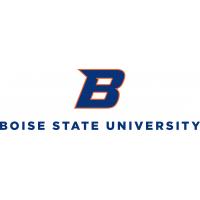This code was used for the study in: Zaiats, A., Cattau M.E., Pilliod D.S., Liu R., Requena-Mullor, J.M., Caughlin, T.T. (2023) Forecasting natural regeneration of sagebrush after wildfires using population models and spatial matching. Landscape Ecology, http://doi.org/10.1007/s10980-023-01621-1
Abstract
Context
Addressing ecosystem degradation in the Anthropocene will require ecological restoration across large spatial extents. Identifying areas where natural regeneration will occur without direct resource investment will improve scalability of restoration actions.
Objectives
An ecoregion in need of large scale restoration is the Great Basin of the Western US, where increasingly large and frequent wildfires threaten ecosystem integrity and its foundational shrub species. We develop a framework to forecast where post-wildfire regeneration of sagebrush cover (Artemisia spp.) is likely to occur within the burnt areas across the region (> 900,000 km2).
Methods
First, we parameterized population models using Landsat satellite-derived time series of sagebrush cover. Second, we evaluated the out-of-sample performance by predicting natural regeneration in wildfires not used for model training. This model assessment reproduces a management-oriented scenario: making restoration decisions shortly after wildfires with minimal local information. Third, we asked how accounting for increasingly fine-scale spatial heterogeneity could improve model forecasting accuracy.
Results
Regional-level models revealed that sagebrush post-fire recovery is slow, estimating > 80-year time horizon to reach an average cover at equilibrium of 16.6% (CI95% 9–25). Accounting for wildfire and within-wildfire spatial heterogeneity improved out-of-sample forecasts, resulting in a mean absolute error of 3.5 ± 4.3% cover, compared to the regional model with an error of 7.2 ± 5.1% cover.
Conclusions
We demonstrate that combining population models and non-parametric spatial matching provides a flexible framework for forecasting plant population recovery. Models for population recovery applied to Landsat-derived time series will assist restoration decision-making, including identifying priority targets for restoration.
Data Use
License
Open Access-No license specified
Recommended Citation
Zaiats A, Cattau ME, Pilliod DS, Liu R, Requena-Mullor JM, Caughlin TT. 2023. Code for Zaiats et al. 2023 Landscape Ecology (v1.1). Zenodo. https://doi.org/10.5281/zenodo.7737647
Funding
US National Science Foundation and Idaho EPSCoR: OIA-1757324
Data and Resources
| Field | Value |
|---|---|
| Modified | 2023-09-06 |
| Release Date | 2023-04-26 |
| Publisher | |
| Identifier | 1260bed2-eac3-42b7-bfbb-35f309630239 |
| Spatial / Geographical Coverage Location | Great Basin USA |
| Temporal Coverage | Tuesday, January 1, 1985 - 00:00 to Monday, December 31, 2018 - 00:00 |
| Language | English (United States) |
| License | Open Access-No license specified |
| Author | |
| Contact Name | Andrii Zaiats |
| Contact Email | |
| Public Access Level | Public |
| DOI | 10.5281/zenodo.7737647 |

